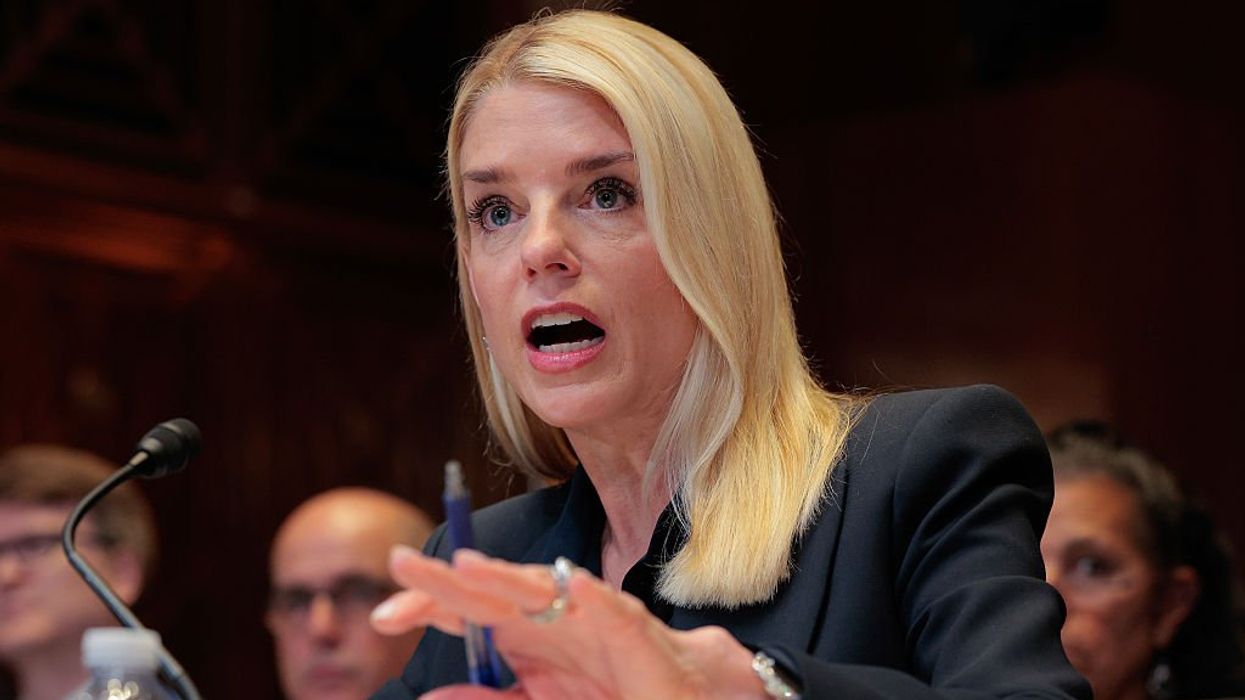A few months ago, Attorney General Pam Bondi said she had Epstein’s client list on her desk. Now the Justice Department and FBI say the list doesn’t exist. What changed?
Late Sunday night, the Department of Justice and FBI released a two‑page memo to Axios claiming they found no evidence that Jeffrey Epstein kept a “client list,” blackmailed powerful figures, or was murdered in his cell. The memo clings to the original narrative that Epstein died by suicide in 2019.
To prop up that conclusion, the government published a three-page inventory of items seized from Epstein’s New York property: hard drives, tapes, sex toys, a false passport, and materials labeled with grotesque descriptions.
The Epstein case isn’t over. It is the Rosetta stone of public corruption.
Are we seriously supposed to accept that the case is suddenly closed? Attorney General Pam Bondi once told Fox News a “client list” was literally “sitting on [her] desk.” Now? Crickets. Influencers like Elon Musk are calling it “the final straw,” arguing that the memo is government theater to shield powerful elites.
This newly released list information isn’t just damning — it’s clarifying. No matter what you believe about Epstein’s past, his connections, or the murky circumstances of his death, the physical material collected by law enforcement points to five unavoidable conclusions. Each one raises a deeper and more disturbing question about the integrity of our institutions.
In short, the Epstein narrative is far from closed.
1. Epstein wasn’t a lone predator
The new evidence released from the Justice Department reads like a logistics inventory: dozens of electronic devices, thousands of photos, labeled albums, surveillance tapes, foreign passports, and even blueprints. One man doesn’t accumulate this kind of material — not without help, not without infrastructure.
This wasn’t just one depraved individual hiding a secret life. This was an operation. There were logistics. There was coordination. It was built to function and built to last. It was designed to serve a purpose — and to avoid detection.
2. The digital footprint is too large
Hundreds of hard drives, USBs, CDs, backup servers — some with sick labels such as "girl pics nude book 4.” Employee directories, flight logs, video archives. The kind of data capable of telling a full story — not just of crimes committed, but of the people who enabled them or turned a blind eye.
And yet, the real scandal isn’t just the content of these files. It’s how little the public has been allowed to see. Where is the transparency? Why hasn’t this material been disclosed in full?
3. Intel agency involvement is no longer a fringe theory
An Austrian passport with Epstein’s face. Connections in multiple countries. A global footprint. Honeytrap-style setups. These aren’t signs of a rich playboy — they’re signatures of intelligence tradecraft.
The precision, the longevity, the immunity from exposure for decades — none of it is accidental. None of it should be dismissed. To suggest that this might have had intelligence involvement isn’t conspiratorial. It’s logical.
4. The system’s silence is telling
If any ordinary citizen had even one-tenth of what was found in Epstein’s homes — underage photos, encrypted files, coded file names, international travel records — they would already be serving a life sentence. Yet here, we’re met with silence. No high-profile prosecutions. No public hearings. No accountability.
The lack of consequence is the consequence. The silence of the system is itself a kind of answer — and it’s deafening.
5. Every elite institution is on trial
This is no longer just about Epstein. It’s about what happens when justice is optional, when media chooses complicity over courage, when law enforcement protects the powerful rather than prosecutes them, when truth is buried because its exposure might be inconvenient for people in the right circles.
Until this case is fully exposed, every elite institution in America carries a stench it cannot wash off. Public trust is hemorrhaging, and no press release can stop the bleeding.

A civic reckoning
To dismiss public concern about Epstein as a “conspiracy theory” is to admit that we no longer believe in basic civic accountability. The demand for answers is not fueled by paranoia — it’s a moral and constitutional obligation. If we shrug off what those files contain, we declare that truth is now negotiable, justice is a luxury reserved for the unimportant, and power is a permanent shield for the perverse.
The Epstein case isn’t over. It is the Rosetta stone of public corruption. And if we don’t get to the bottom of it — if we allow the truth to remain buried — we will never restore what’s already been lost.


 AASHISH KIPHAYET / Contributor | Getty Images
AASHISH KIPHAYET / Contributor | Getty Images Harold M. Lambert / Contributor | Getty Images
Harold M. Lambert / Contributor | Getty Images Adam Gray / Stringer | Getty Images
Adam Gray / Stringer | Getty Images Anadolu / Contributor | Getty Images
Anadolu / Contributor | Getty Images